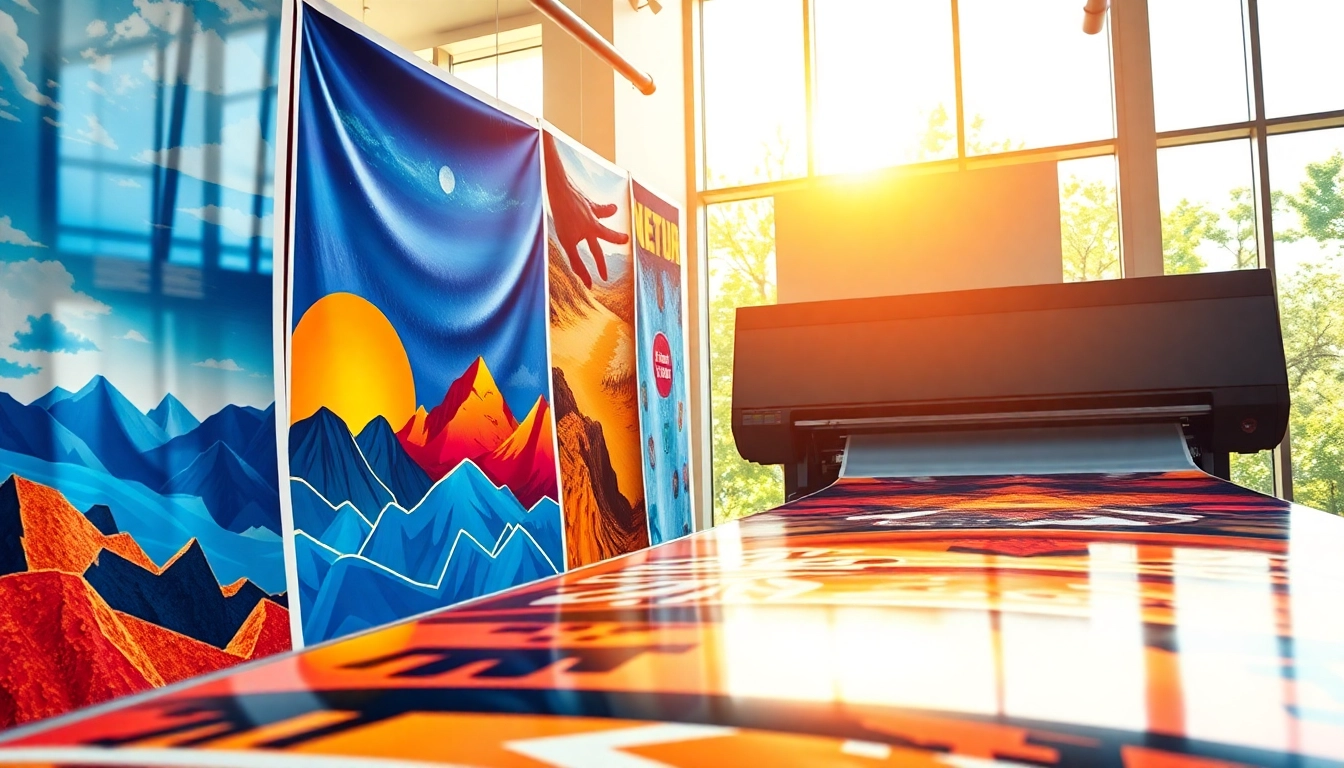Understanding the Basics of Poster Printing
What is Poster Printing?
Poster printing is a specialized service that involves creating visual representations, typically on a large scale, which can be used for various promotional, educational, or decorative purposes. This process allows individuals and businesses to showcase vibrant images and text in a format that captures attention and communicates messages effectively. The art of poster printing blends graphic design and modern printing technologies to produce high-quality prints that cater to specific audience needs. From personal projects to corporate marketing, poster printing opens a world of possibilities.
Common Uses and Applications
Posters serve a myriad of functions across various domains. Common applications include:
- Marketing and Promotion: Businesses often use posters to advertise products, events, and services to attract customers.
- Art and Décor: Various artists create prints of their work to sell or display in galleries, homes, and public spaces.
- Educational Tools: In academic settings, posters are utilized to present research findings, concepts, or educational content in a visually appealing way.
- Event Signage: Posters are crucial for informing attendees about event details such as schedules, locations, and rules.
- Political Campaigning: Politicians often utilize posters to disseminate their messages and encourage voter support.
Types of Poster Printing Materials
Choosing the right material is essential for achieving the desired look and functionality of a poster. Here are some common materials used:
- Paper: The most traditional option, ranging from standard bond paper to high-quality glossy or matte finishes.
- Vinyl: Waterproof and durable, ideal for outdoor use or where longevity is desired.
- Canvas: Provides a textured finish, often used in art reproductions, offering a premium look.
- Fabric: Lightweight and easy to transport, fabric posters are suitable for events and banners due to their vibrant colors and flexibility.
- Board: Sturdy and robust, suitable for displays that require more structure.
Choosing the Right Design for Your Poster Printing
Color Schemes and Typography
Color and typography are two pivotal elements of effective poster design. The choice of colors can elicit specific emotions and actions. For instance, vibrant colors tend to attract attention, while softer colors can create a calming effect. When selecting a color scheme, consider the brand identity and target audience to ensure cohesion and relevance.
Typography also plays a fundamental role in readability and overall aesthetics. The right font choice can enhance the message of the poster and align with its purpose. Utilize contrasting colors for text and background to make essential details stand out while maintaining clarity.
Graphic Design Principles for Effective Posters
An effective poster is not just about good graphics, but it also requires a solid understanding of design principles. Consider the following:
- Hierarchy: Establish a clear information hierarchy by emphasizing important elements using size, color, and placement.
- Balance: Create symmetry or asymmetry to guide viewers through the poster without overwhelming them.
- Alignment: Ensure elements are aligned to maintain a professional look and improve visual flow.
- Contrast: Use contrast to draw attention to critical information and enhance readability.
- White Space: Don’t overcrowd the poster; use white space strategically to allow elements to breathe and enhance focus.
Utilizing Images and Visuals in Your Design
Images and visuals are crucial in poster printing as they communicate messages quickly and effectively. High-resolution images can enhance the quality and professionalism of the poster. It is essential to select images that resonate with the intended message of the poster. For example, if the poster is promoting a music event, vibrant images of performers or engaging colors that reflect the genre can enhance interest.
Additionally, integrating infographics or icons can help convey complex information succinctly. Always ensure images used are relevant and support the content rather than distract from it.
Poster Printing Techniques and Technologies
Digital vs. Offset Poster Printing
Understanding printing techniques helps in making informed decisions for poster production. Digital printing is often favored for its flexibility and quick turnaround times, making it ideal for short runs and customized prints. In contrast, offset printing, while more suited for bulk production, offers exceptional color accuracy and detail, making it the preferred choice for high-quality large posters.
Choosing between these methods depends on your specific needs, budget, and the scale of your printing project. For businesses needing smaller quantities of high-quality prints, digital might be the best choice, while large-scale productions could benefit from offset methods.
Understanding Print Resolution and Quality
Print resolution is a critical factor influencing the quality of your finished poster. Resolution is measured in dots per inch (DPI); a higher DPI means more detail. For posters, a minimum of 300 DPI is recommended for clear, crisp images. Lower DPI values can lead to blurred or pixelated images, reducing the overall effectiveness of the poster.
Always ensure that the images and files you provide for printing are of sufficient resolution for the size of your poster to achieve the best results.
Eco-friendly Poster Printing Options
As awareness of environmental issues grows, many print providers offer eco-friendly printing options. Using sustainable materials, such as recycled paper or biodegradable inks, can significantly reduce the environmental footprint of your printing projects. Additionally, choosing local printing services can minimize carbon emissions associated with long-distance shipping.
When considering eco-friendly options, inquire about the materials used in production and the printing processes involved to ensure that your choices align with environmental values.
Preparing Your Files for Poster Printing
File Formats and Sizes for Optimal Results
Preparing your design files correctly will ensure a successful printing outcome. Common file formats used in poster printing include PDF, TIFF, and JPEG. Each format has its strengths; for example, PDF files are preferred for their ability to maintain high quality across various devices and when printing.
When preparing your file, also consider the size and dimensions of the poster. Always design at the final print size and ensure that the correct aspect ratio is utilized to avoid any stretching or distortion in the final product.
How to Check Color Accuracy
Color accuracy is paramount to ensure that the printed poster matches your design’s intent. One method to ensure color fidelity is to utilize color calibration tools for your monitor, ensuring that what you see on-screen correlates with the final output. Additionally, requesting a proof print can help visualize how colors translate from digital to physical form before the entire print run.
Tips for Prepress File Preparation
Proper prepress preparation can prevent common printing issues. Before submitting your design, make sure to:
- Check all fonts and embed them in the document to avoid missing typefaces.
- Ensure images are in the correct color mode (CMYK instead of RGB for print).
- Remove any unnecessary layers and guides from your design file.
- Include bleed areas if the design requires colors or images to extend to the edge of the paper.
- Consult with your printing service for any specific requirements they may have for file submission.
Measuring Success: Tracking Your Poster Printing Performance
Setting Goals and Objectives for Your Posters
Before printing your posters, it’s essential to outline clear goals and objectives. Understand your target audience and the message you wish to convey. Whether the goal is to increase brand visibility, promote an event, or educate an audience, having defined objectives will serve as a guide throughout the design and printing process.
Analyzing Audience Engagement
Posters are often a component of a broader marketing strategy. To assess their effectiveness, collect feedback and measure audience engagement levels. This may involve tracking responses via QR codes, social media interactions related to the poster, or event attendance before and after poster deployment. Gathering this data can provide insights into how well your posters resonate with the intended audience.
Adjusting Strategies for Future Poster Printing
After reviewing performance metrics, it’s essential to adjust future strategies based on findings. If certain designs, messages, or placements were particularly successful, consider replicating those aspects in future poster projects. Alternatively, if results were below expectations, use the insights gained to make informed adjustments in design or distribution methods for better outcomes.




